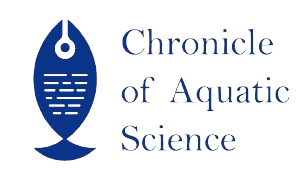| File | Action |
|---|---|
| CoAS_V1IS5_05 | Download |
- 919088951040 call us
- chronicleofaquaticscience@gmail.com Mail us
CoAS_V1IS5_05
Popular Article
Aquatic Origin Foods: A Nutritional Pool
R. Kumar*, A. Shirisha and C. V. Savalia
Abstract
Aquatic origin foods include a different group of flora and fauna, vegetation and microorganisms, each with distinctive nutrients qualities. Aquatic food products are the healthiest and most nutrient dense food sources in the world. It contains major essential protein, omega-3 fatty acids and vital source of micronutrients, such as iron, zinc, calcium, iodine, vitamins A, B12 and D. These are necessary for continuous improving nutrition and productive health outcomes of huge populations suffering as of the “triple burden of malnutrition”. Diet supplemented with different aquatic origin foods lowers the risk of disease-related death due to coronary heart. Consuming aquatic source foods may also lower the risk of a number of other harmful health consequences, such as cognitive decline, depression, anxiety, non-fatal coronary disease of heart, congestive failure of heart, fibrillation of artery and other inflammatory disorders.
Keywords
Aquatic, health, nutritional, foods, public
References
Barre, T., Perignon, M., Gazan, R., Vieux, F., Micard, V., Amiot, M.-J. & Darmon, N. 2018. Integrating nutrient bioavailability and coproduction links when identifying sustainable diets: How low should we reduce meat consumption? PLoS ONE, 13(2): e0191767.
Ezzati, M., & Riboli, E. (2013). Behavioral and dietary risk factors for noncommunicable diseases. The New England journal of medicine, 369(10): 954–964.
Golden, C. D., Koehn, J. Z., Shepon, A., Passarelli, S., Free, C. M., Viana, D. F., Matthey, H., Eurich, J. G., Gephart, J. A., Fluet-Chouinard, E., Nyboer, E. A., Lynch, A. J., Kjellevold, M., Bromage, S., Charlebois, P., Barange, M., Vannuccini, S., Cao, L., Kleisner, K. M., Rimm, E. B., … & Thilsted, S. H. 2021. Aquatic foods to nourish nations. Nature, 598(7880): 315–320.
Golden, C., Allison, E., Cheung, W. et al. 2016. Nutrition: Fall in fish catch threatens human health. Nature, 534: 317–320.
Hansen, M., Thilsted, S.H., Sandström, B., Kongsbak, K., Larsen, T., Jensen, M., Sørensen, S.S., 1998. Calcium absorption from small soft-boned fish. Journal of Trace Elements in Medicine and Biology. 12(3): 148– 154.
Hicks, C. C., Cohen, P. J., Graham, N. A. J., Nash, K. L., Allison, E. H., D'Lima, C., Mills, D. J., Roscher, M., Thilsted, S. H., Thorne-Lyman, A. L., & MacNeil, M. A. 2019. Harnessing global fisheries to tackle micronutrient deficiencies. Nature, 574(7776), 95–98.
Hilborn, R., Banobi, J., Hall, S.J., Pucylowski, T. & Walsworth, T.E. 2018. The environmental cost of animal source foods. Frontiers in Ecology and the Environment, 16(6): 329–335. Kawarazuka N. 2010. The contribution of fish intake, aquaculture, and smallscale fisheries to improving nutrition: A literature review. The WorldFish Center Working Paper No.2106. The WorldFish Center, Penang, Malaysia. 51 p.
Lala-Pritchard, T., & Johnstone, G. 2020. 2030 Research and innovation strategy: aquatic foods for healthy people and planet. https://hdl.handle.net/20.500.12348 /4411
Michaelsen, K. F., Hoppe, C., Roos, N., Kaestel, P., Stougaard, M., Lauritzen, L., Mølgaard, C., Girma, T., & Friis, H. 2009. Choice of foods and ingredients for moderately malnourished children 6 months to 5 years of age. Food and nutrition bulletin, 30(3 Suppl): S343–S404.
Mozaffarian, D., & Rimm, E. B. 2006. Fish intake, contaminants, and human health: evaluating the risks and the benefits. JAMA, 296(15): 1885–1899.
Rimm, E. B., Appel, L. J., Chiuve, S. E., Djoussé, L., Engler, M. B., KrisEtherton, P. M., Mozaffarian, D., Siscovick, D. S., Lichtenstein, A. H., & American Heart Association Nutrition Committee of the Council on Lifestyle and Cardiometabolic Health; Council on Epidemiology and Prevention; Council on Cardiovascular Disease in the Young; Council on Cardiovascular and Stroke Nursing; and Council on Clinical Cardiology. 2018. Seafood LongChain n-3 Polyunsaturated Fatty Acids and Cardiovascular Disease: A Science Advisory From the American Heart Association. Circulation, 138(1): e35–e47.
Sandstrom, B., Almgren, A., Kivistö, B., Cederblad, Å., 1989. Effect of protein level and protein source on zinc absorption in humans. The Journal of Nutrition. 119, 48–53.
Tacon, A. G., & Metian, M. 2013. Fish matters: importance of aquatic foods in human nutrition and global food supply. Reviews in fisheries Science, 21(1): 22-38.
Thilsted, S. H., Thorne-Lyman, A., Webb, P., Bogard, J. R., Subasinghe, R., Phillips, M. J., & Allison, E. H. 2016. Sustaining healthy diets: The role of capture fisheries and aquaculture for improving nutrition in the post-2015 era. Food Policy, 61: 126-131.
Wheal, M.S., DeCourcy-Ireland, E., Bogard, J.R., Thilsted, S.H., Stangoulis, J.C.R., 2016. Measurement of haem and total iron in fish, shrimp and prawn using ICP-MS: implications for dietary iron intake calculations. Food Chemistry. 201, 222–229.
Zhao, L. G., Sun, J. W., Yang, Y., Ma, X., Wang, Y. Y., & Xiang, Y. B. 2016. Fish consumption and all-cause mortality: a meta-analysis of cohort studies. European journal of clinical nutrition, 70(2): 155-161.
- Published online
- 30th October, 2023
How to Cite the Article
Kumar, R., Shirisha, A. and Savalia, C. V. 2023. Aquatic Origin Foods: A Nutritional Pool. Chronicle of Aquatic Science 1(5): 58-64.
Copyright
This is an open-access article distributed under the terms of the Creative Commons Attribution License (CC BY). The use, distribution or reproduction in other forums is permitted, provided the original author(s) and the copyright owner(s) are credited and that the original publication in this journal is cited, in accordance with accepted academic practice. No use, distribution or reproduction is permitted which does not comply with these terms.

CoAS_V1IS5_05


